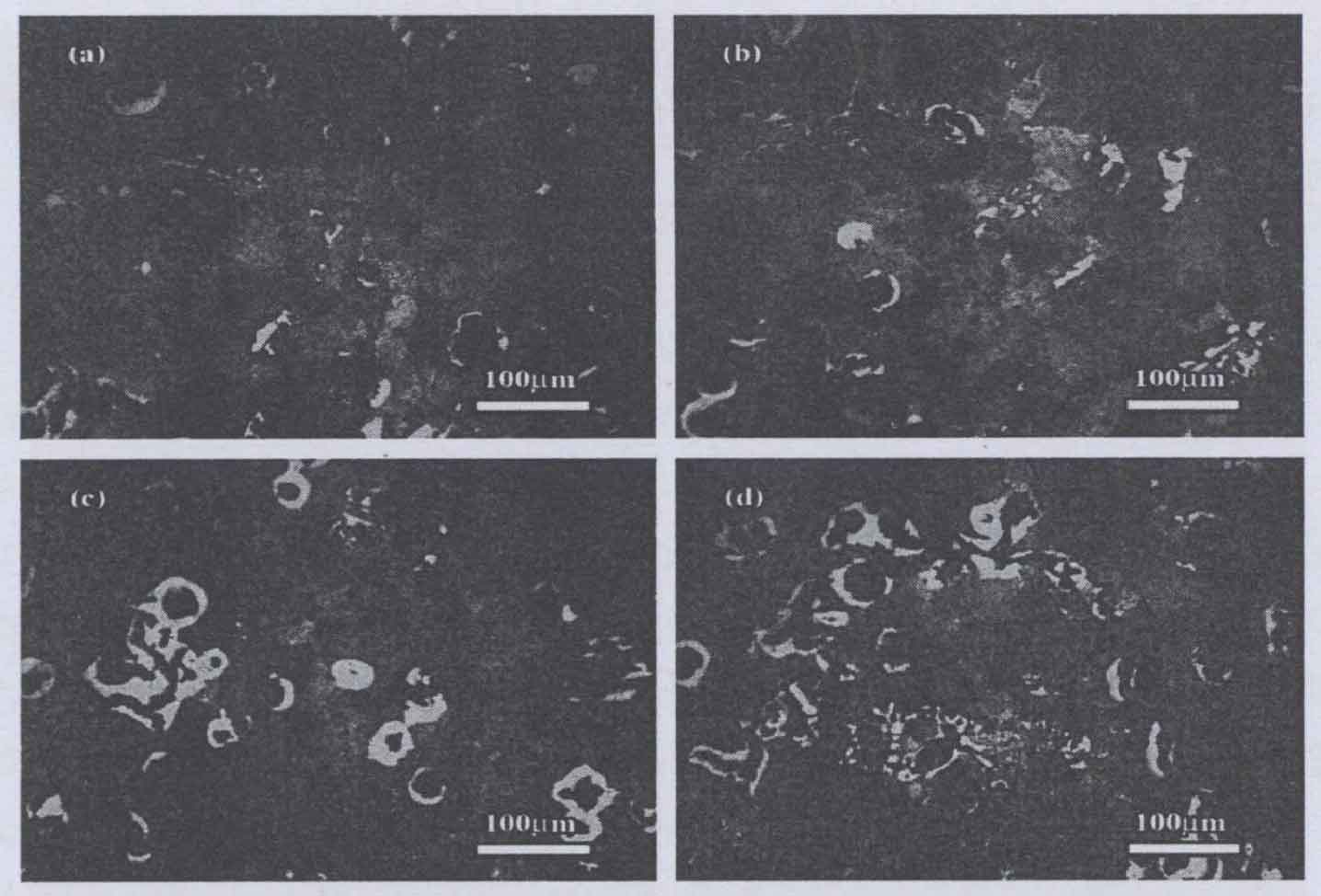The figure shows the matrix structure of nodular cast iron prepared with different amounts of nodulizer. Among them, figures (a) – (d) show the matrix structure of cast iron with the addition of nodulizing agent of 1.4%, 1.1%, 0.8% and 0.5% respectively.

It can be seen from figure a that the structure of nodular cast iron is spheroidal graphite + pearlite + a small amount of ferrite. In addition, the larger graphite balls are surrounded by austenitic shells, forming an ox eye structure, while the smaller graphite balls are not surrounded by austenitic shells. This is because after graphite sphere nucleation, with the extension of solidification time, some graphite nuclei are rapidly closed by austenite shell, and the graphite crystal nuclei grow up under the surrounding of austenite shell, while the graphite spheres with late nucleation are not closed by austenite shell, and directly contact and grow with liquid metal in the metal body, especially some graphite generated during eutectic reaction. When the amount of spheroidizing agent is reduced to 1.1%, the microstructure is composed of spherical graphite + a small amount of vermicular graphite + pearlite and a small amount of ferrite, and the size of graphite balls in the microstructure is small. The microstructure of nodular cast iron is the same as that of nodular cast iron with the addition of 1.1% nodular agent, but the ferrite content in cast iron increases obviously. When the addition of spheroidizing agent is further reduced to 0.5%, the cast iron is transformed into spiral cast iron, the graphite type is mainly vermicular graphite, and the number of spherical graphite is significantly reduced.
In the cast iron with different amount of nodulizing agent, the matrix structure is mainly pearlite, and the content of ferrite is less. The amount of ferrite is mainly related to the content of carbon and silicon in cast iron alloys, especially the content of silicon.
